Adapted from Connecticut Case Studies, by Mark Williams
TEACHER'S SNAPSHOT
Subjects:
Business & Industry, Economics, Invention & Technology, Work
Course Topics/Big Ideas:
Role of Connecticut in U.S. History, The Impact of Science and Technology on Society
Grade:
Grade 8, High School
Lesson Plan Notes
During the latter half of the 19th century, Connecticut changed dramatically, from a mostly agricultural and mercantile society dominated by Protestants of English heritage to a complex, urban, and industrial society in which people of many backgrounds and economic interests competed for prominence and power. People of different religious backgrounds and people who spoke different languages suddenly began to outnumber the old “Yankee stock” in the growing cities. People who challenged the long-standing community structures and inventors who sought capital resources and skilled machinists to manufacture their contraptions all appeared on the scene. And, along with all these people, the steam engine—rumbling, humming, and buzzing along, driving belts at 2,500 feet per minute—turned shafts which drove machines, spindles, and looms that churned out finished products by the thousands in a fraction of the time anyone in 1800 had even imagined.
ESSENTIAL QUESTION
SUPPORTING QUESTIONS
- What factors led to industrialization in the United States, and what made it possible?
- What were some of the characteristics of the late 19th-century industrial economy in the United States?
- What historical sources are available to help provide information about the lives of ordinary people in the past?
- What would it have been like to work at Colt’s Patent Fire-Arms Manufacturing Company in the 1850s-1860s?
ACTIVITY
1. As a class, discuss the compelling and supporting questions that will guide the inquiry. Throughout the activity, pause to have students pose additional questions that they have developed.
2. Individually or in small groups, students will start by investigating the general resources about work and industrialization in Connecticut in the mid- to late-1800s, the excerpts from the following:
- An Introduction to the History of Connecticut as a Manufacturing State
- Special Report on Immigration; Accompanying Information for Immigrants
- “The Labor Legislation of Connecticut”
3. Use the Library of Congress Primary Source Analysis Tool worksheet (download Teacher’s Guide) or another technique or organizer of your choice to guide students’ observations, reflections, and generation of questions. Discuss these as a class. What trends did they notice? What, if anything, surprised them? What can these sources tell us about the lives of working people at the time?
4. Next, students will focus on the sources related to the Colt Patent Fire-Arms Manufacturing Company and the Coltsville neighborhood surrounding it. All students should examine the excerpts from the 1860 Census, but you may wish to divide the other sources up among individual students or small groups.
5. Again, use the Library of Congress Primary Source Analysis Tool worksheet (download Teacher’s Guide) or another technique or organizer of your choice to guide students’ observations, reflections, and generation of questions. Looking at them together, what kind of “picture” do these sources (along with those from the first section of the activity) paint for historians about what life was like working at the Colt Patent Fire-Arms Manufacturing Company and living in Coltsville in the 1850s-60s?
6. Circle back to the compelling question and make a list of additional questions that have arisen throughout the inquiry. Where could students look help answering these questions? What sources might be available and useful?
OPPORTUNITIES FOR ASSESSMENT
- Students will select an identity from among the names listed in the 1860 census (man, woman, or child) and—using the sources provided in this toolkit and any additional sources available—write a fictional letter to a friend or relative somewhere else in Connecticut, the United States, or the world. The letter should include source-based details about what it was like living and/or working in Coltsville in the 1860s.
- Using the sources in the toolkit and additional similar sources, students will research a different industry in Connecticut in the period from 1850-1910 and share their findings with the class. For a few ideas, see some of the ConnecticutHistory.org articles listed in the additional resources below.
- Students will create charts or info-graphics to effectively communicate some of the data provided in the historical sources.
- Students will investigate manufacturing in Connecticut today. What is made in Connecticut? In what ways is manufacturing similar to or different from manufacturing in the late 19th century? Why are these particular industries based in Connecticut?
RESOURCE TOOL KIT
For Part 1 of the Inquiry:
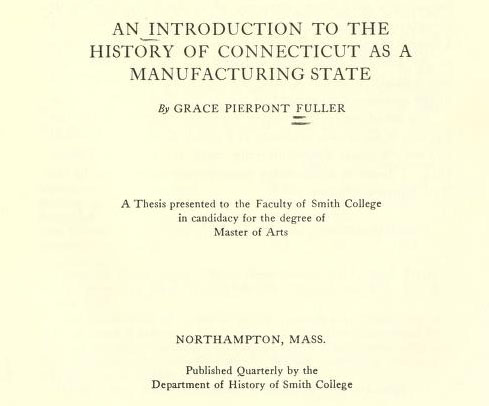
An Introduction to the History of Connecticut as a Manufacturing State. Fuller, Grace Pierpont. Northampton, Mass.: Smith College Department of History, 1915. p. 42-43 and 54-58.
Internet Archive, Courtesy University of Connecticut Libraries.
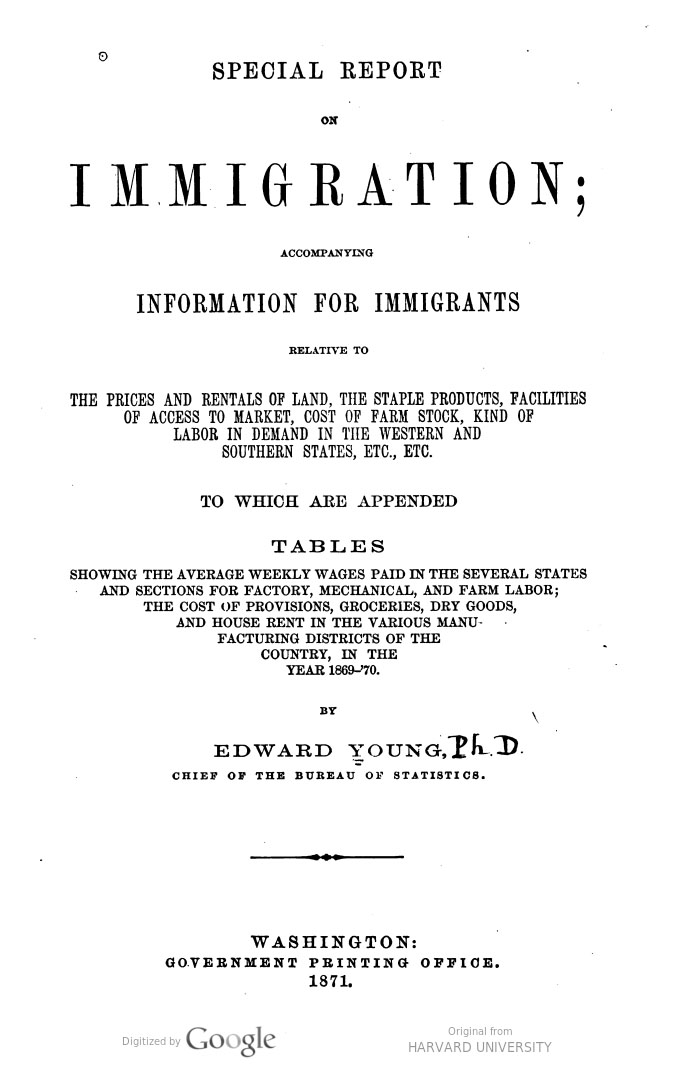
Special Report on Immigration; Accompanying Information for Immigrants. Edward Young, Chief of the Bureau of Statistics. Washington: Government Printing Office, 1871.
Wages for various industries, 1869-1870, p. 202-204, 206-208, 213.
Cost of living tables, 1869, p. 224-225.
Hathi Trust, Courtesy Harvard University.
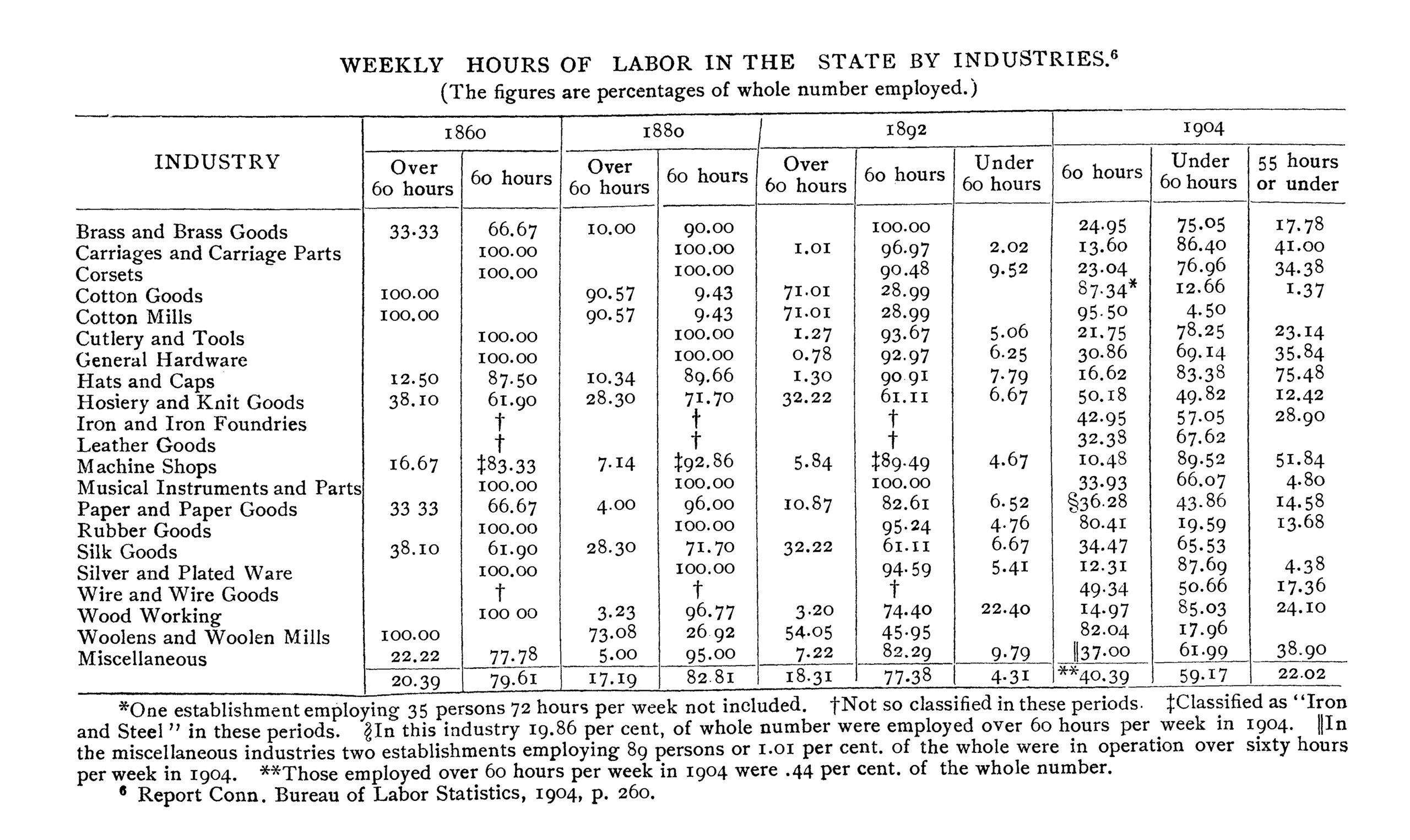
Publications of the American Economic Association, 3rd Series, Vol. 8, No. 3, Aug., 1907, p. 1-322. “The Labor Legislation of Connecticut,” Alba Edwards.
Chart showing Weekly Hours by Industry, 1860-1904, p. 81.
Timeline of Child Labor Legislation, p. 319-320.
For Part 2 of the Inquiry:

Excerpt from the 1860 U.S. Census, Third District, Hartford, p. 121.
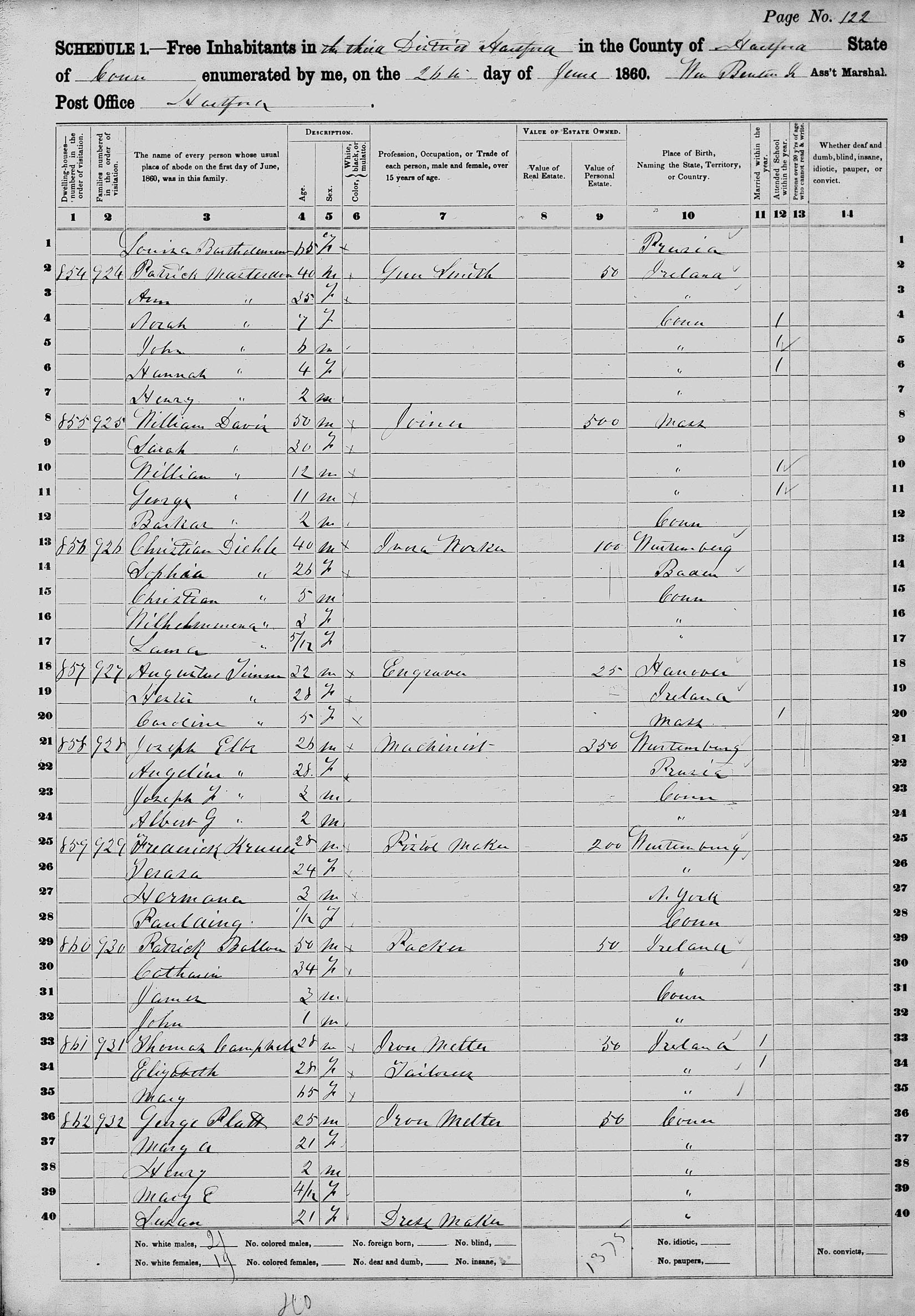
Excerpt from the 1860 U.S. Census, Third District, Hartford, p. 122.
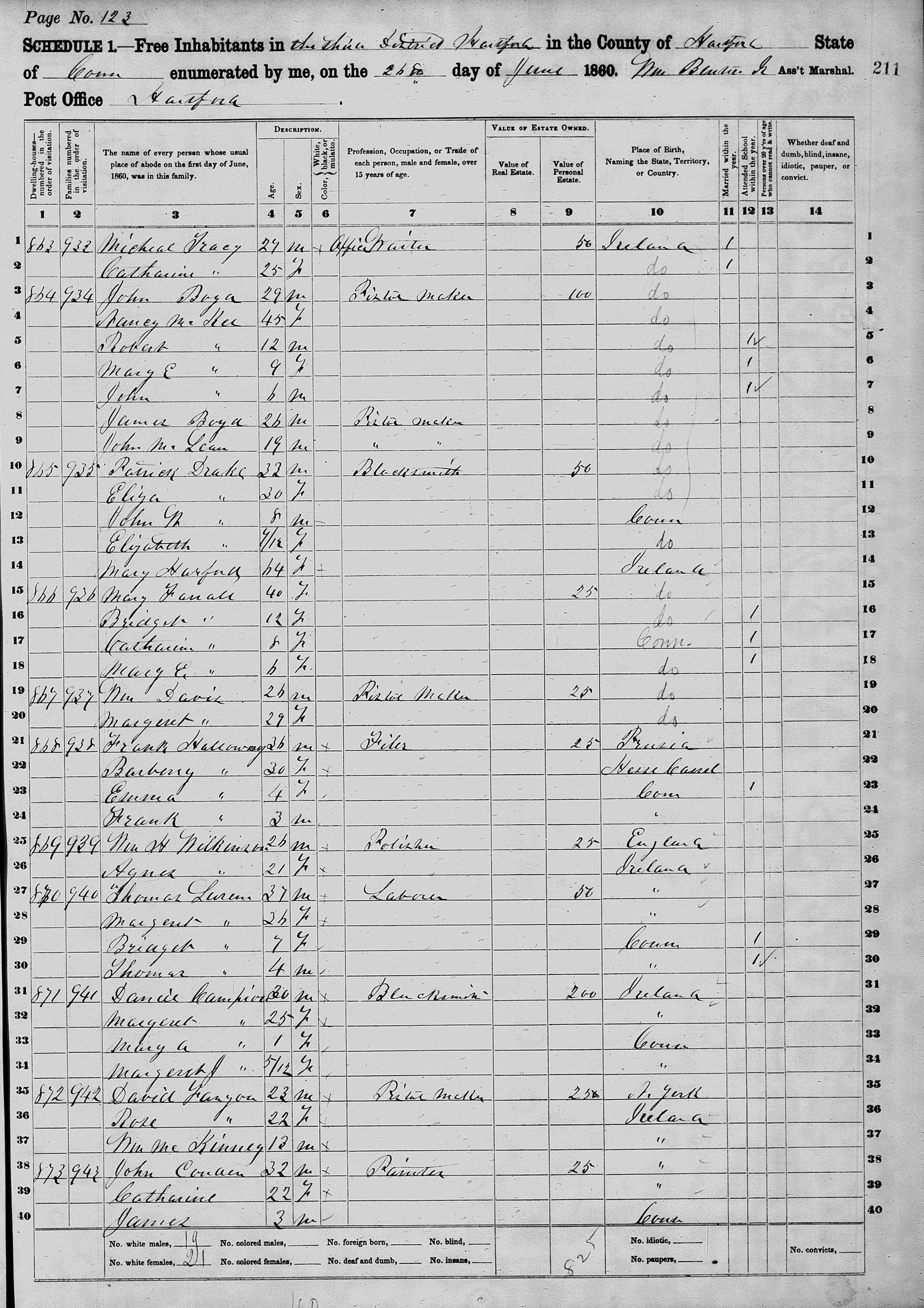
Excerpt from the 1860 U.S. Census, Third District, Hartford, p. 123.

Excerpt from the 1860 U.S. Census, Third District, Hartford, p. 124.

Excerpt from the 1860 U.S. Census, Third District, Hartford, p. 121-124.
Transcription courtesy FamilySearch.org and Mark Williams.
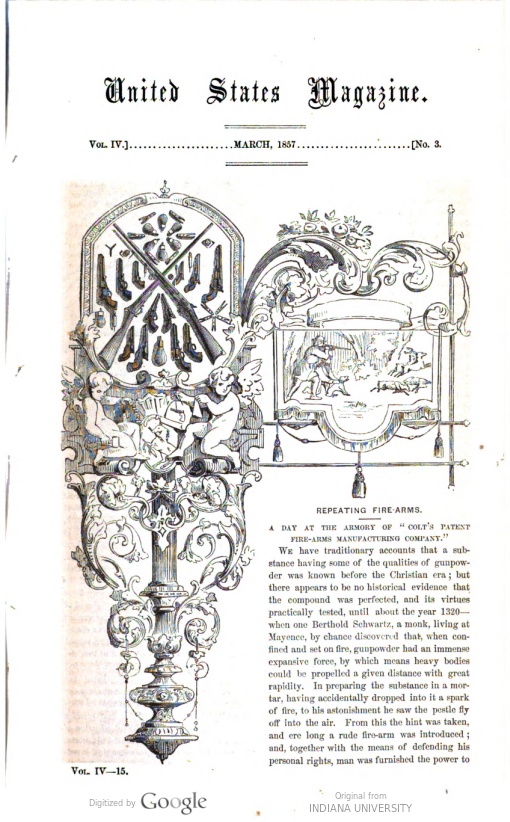
Excerpts from United States Magazine, Vol. IV, March, 1857, No. 3, “Repeating Fire-Arms. A Day At The Armory Of ‘Colt’s Patent Fire-Arms Manufacturing Company.’”
Description of the steps in pistol manufacturing (p. 236-237, starting “The barrel goes through forty-five separate operations…”)
Description of the cartridge shop (p. 240, starting “Another of the numerous inventions…)
Hathi Trust, Courtesy Indiana University.
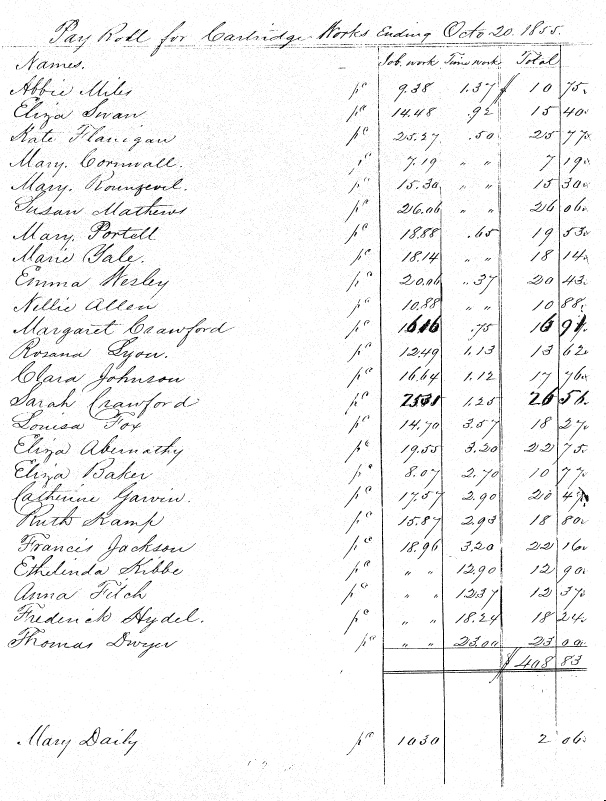
Payroll record for October, 1855, Colt Cartridge Shop. Connecticut State Library.
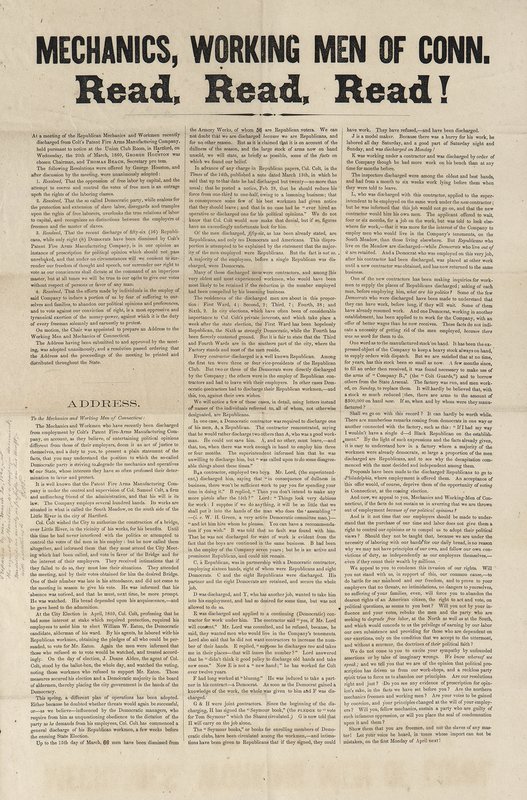
“Mechanics, working men of Conn. Read, read, read! At a meeting of the Republican Mechanics and Workmen recently discharged from Colt’s Patent Fire Arms Manufacturing Company,” 1860. Connecticut Museum of Culture and History.
Hartford Daily Courant, March 16, 1860, p. 2.
Hartford Daily Courant, March 20, 1860, p. 2.
“The Manufactures of Hartford. Fourth Article. The Willow Works.” Hartford Daily Courant, May 21, 1867, p. 4.

Potsdam Village & Willow Ware Factory, 1864-1874. Connecticut State Library.
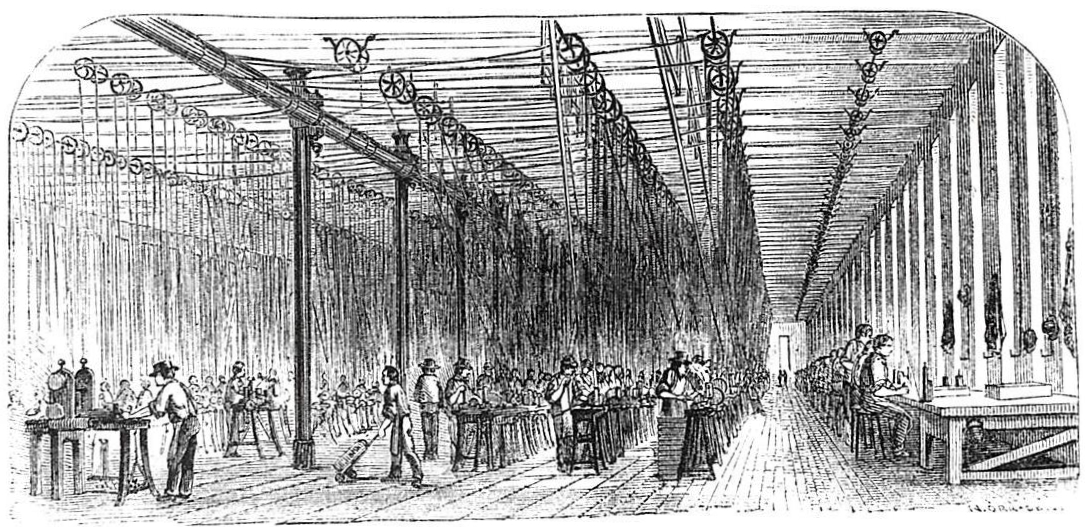
Colt Armory, United States Magazine, Vol. IV, March, 1857, No. 3, “Repeating Fire-Arms. A Day At The Armory Of ‘Colt’s Patent Fire-Arms Manufacturing Company.’”
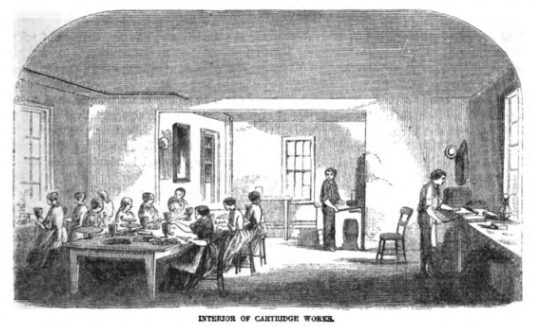
Colt Cartridge Shop, United States Magazine, Vol. IV, March, 1857, No. 3, “Repeating Fire-Arms. A Day At The Armory Of ‘Colt’s Patent Fire-Arms Manufacturing Company.’”
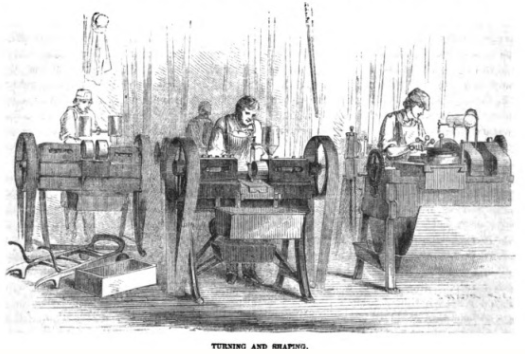
Colt Turning and Shaping, United States Magazine, Vol. IV, March, 1857, No. 3, “Repeating Fire-Arms. A Day At The Armory Of ‘Colt’s Patent Fire-Arms Manufacturing Company.’”
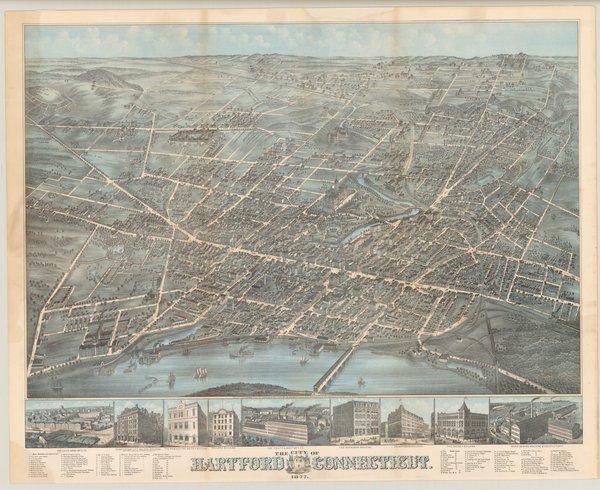
City of Hartford, Connecticut, 1877. Connecticut Museum of Culture and History.
Note: This image is later than the focus time period, but it gives a good sense of where Colt and Hartford are heading.

Library of Congress Primary Source Analysis Tool Worksheet
ADDITIONAL RESOURCES
Places to GO
Museum of Connecticut History, Hartford
Connecticut Museum of Culture and History, Hartford
Coltsville Historic District, Hartford
Things To DO
Explore more by delving deeper into these historical sources…
United States Magazine, Vol. IV, March, 1857, No. 3, “Repeating Fire-Arms. A Day At The Armory Of ‘Colt’s Patent Fire-Arms Manufacturing Company’”
First Annual Report of the Bureau of Labor Statistics of the State of Connecticut, 1885. Hathi Trust, Courtesy University of California.
Websites to VISIT
New Coltsville National Historical Park
Places of Invention project from the Smithsonian’s Lemelson Center for the Study of Invention and Innovation
Articles to READ
ConnecticutHistory.org articles about Colt:
ConnecticutHistory.org articles about other Connecticut Industries:



